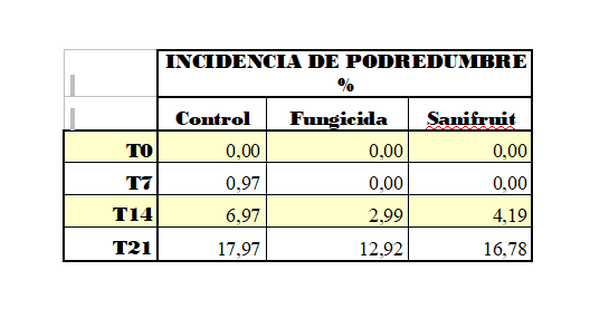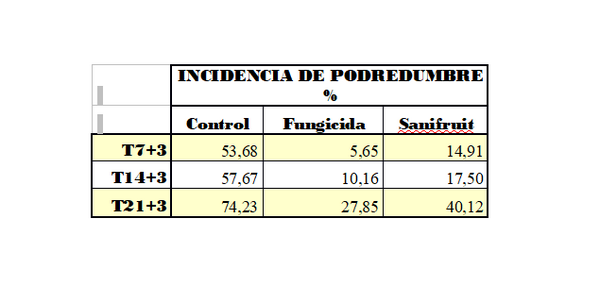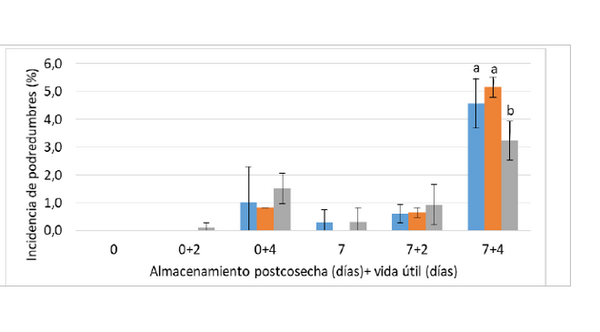In 2021, Sanifruit launched SaniStone, a post-harvest solution to extend the shelf life of cherries.
Sanifruit is aware of the challenges that cherry exporting companies face and focuses on minimizing complaints at the destination, increasing their profitability by reducing product losses while respecting public health and the environment.
SaniStone helps reduce dehydration and peduncle greening, which, together with rot, are the main market challenges for cherry exporters. In addition, it ensures that the fruit arrives at the market looking better and more protected against external agents, without adding active ingredients.
A 2021 study carried out by the University of Zaragoza for the Lapins cherry variety shows that after 7 days of refrigerated storage, there were no differences in terms of rot, but the cherries belonging to the control batch (untreated) experienced a notable darkening. In addition, cherries treated with the competitor's fungicide showed slight dehydration compared to cherries from Sanifruit's control and SaniStone batches.
 © Sanifruit
© Sanifruit
Table 1: Incidence of rot in each of the treatments when the fruit has just been taken out of cold storage (1°C) after 7, 14, and 21 days.
 © Sanifruit Table 2: Incidence of rot in each of the treatments following a three-day-at-20°C marketing simulation period after 7, 14, and 21 days of refrigerated storage at 1°C.
© Sanifruit Table 2: Incidence of rot in each of the treatments following a three-day-at-20°C marketing simulation period after 7, 14, and 21 days of refrigerated storage at 1°C.
Rot incidence results obtained when the fruit has just been taken out of cold storage are very different than when the batches are evaluated after the three-day-at-20°C marketing simulation period.
During the following period, SaniStone managed to reduce the development of rot by almost 46% compared to untreated fruit (control batch).
Cicytex evaluates Sanistone's efficacy on Jerte's cherries
In 2022, Sanifruit contacted Cicytex (Extremadura's Center for Scientific and Technological Research) to evaluate the efficacy of SaniStone's drencher and in-line application by nebulization formats compared to the competing phytosanitary product in a cultivar of Lapins variety cherries produced and harvested in the Jerte Valley region. "These results highlight the effectiveness of Sanifruit's natural treatments in controlling fungal diseases," the company stated.
 © Sanifruit
© Sanifruit
Evolution of the percentage of Lapins cherry rot during post-harvest storage and subsequent shelf life.
How does SaniStone work as an alternative to fungicides?
The SaniStone post-harvest solution has four main effects:
- An elicitor that increases defenses.
- A preservative that delays decay.
- An antioxidant to prevent damage caused by oxidation.
- And a coating that protects the fruit against metabolic ripening reactions.
SaniStone is a 100% natural treatment, certified by CAEE as an organic farming input made from food-grade plant extracts. It also holds Zerya zero-waste certification.
Consumers always eat cherries with their skin. Thus, using a product that leaves no residues on the fruit is essential to protect their health by preventing them from ingesting foods treated with phytosanitary products.
 For more information:
For more information:
Sanifruit
Email: sanifruit@sanifruit.com
www.sanifruit.com
